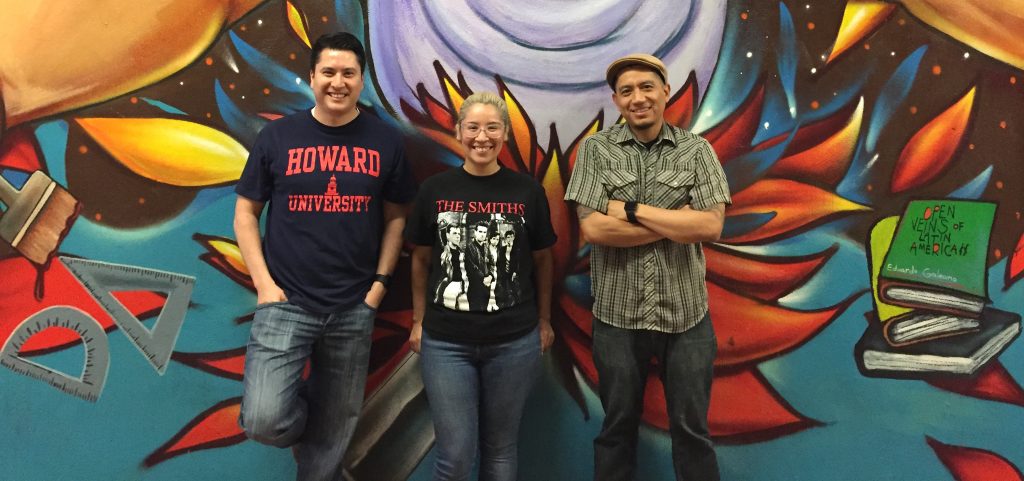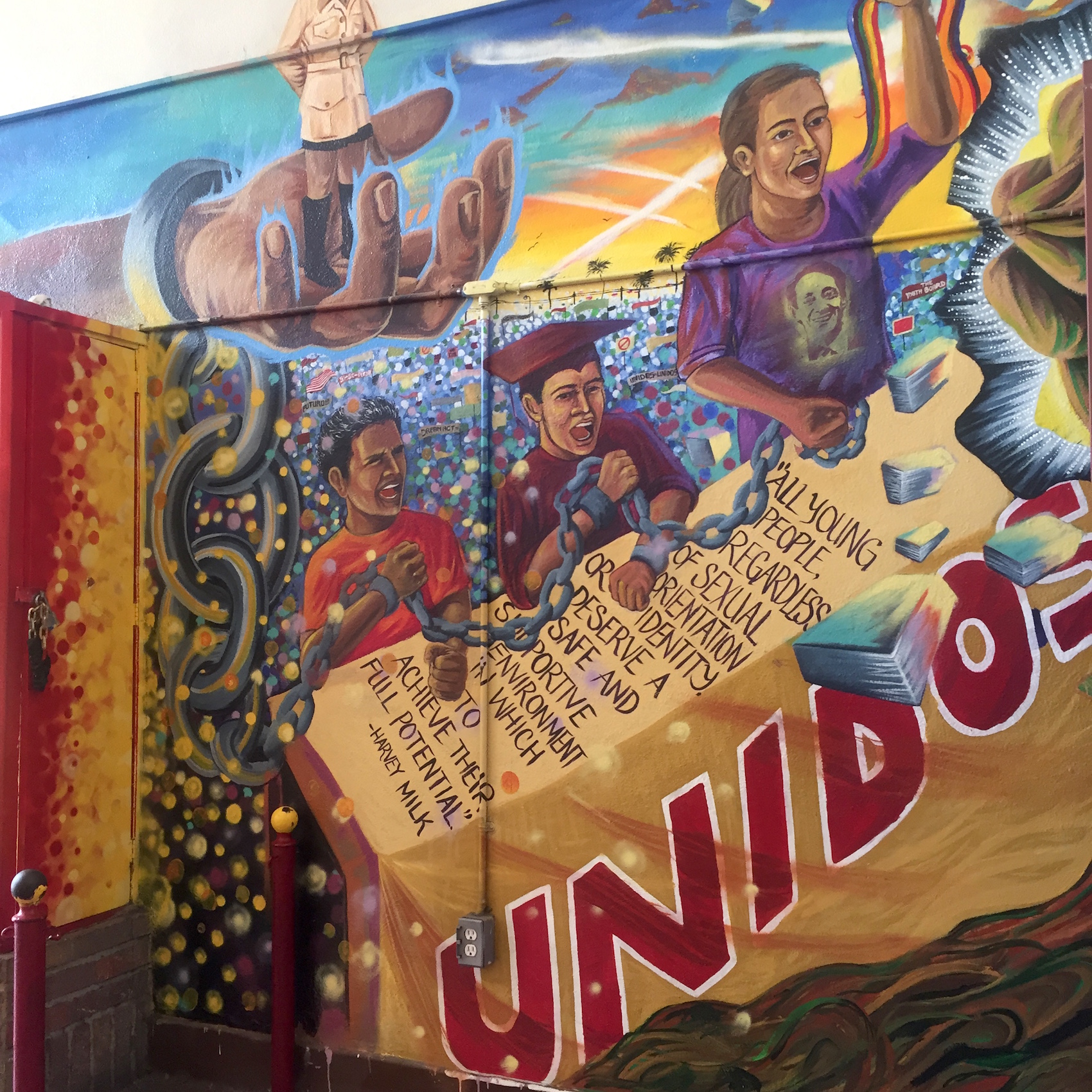Behind every student is an educator who inspires. 826LA is honored to work with such amazing teachers and educators.
In 2014 at Roosevelt High School, three teachers started a revolution. In a ninth grade Ethnic Studies course called Boyle Heights and Me, Roxana Dueñas, Jorge Lopez, and Eduardo Lopez challenged their students to question the norm. Through the themes of Resistance, Resilience, and Reimagination, students analyzed root causes of oppression and took a closer look at their own community of Boyle Heights. This is My Revolution was born out of a year long conversation between students and the world around them. It is a collection of brutally honest, hopeful and transformative student prose and poetry.
Two years later, the revolution still lives on. This is My Revolution was so successful that Roosevelt High School has implemented the book into the curriculum of Boyle Heights and Me. It has been presented at national conferences and used in Ethnic Studies classrooms around the country.
826LA’s Director of In-School Programs & College Access, Marisa Urrutia Gedney, sat down with these inspiring educators to talk about what it’s like to tell their students that their pieces are being read and discussed alongside critical authors.
Get to know more about the project and the teachers below:
[ezcol_1third]
Inside the halls of Roosevelt High School
[/ezcol_1third]
[ezcol_2third_end]
Marisa Urrutia Gedney: What was one of your favorite moments from writing This is My Revolution?
Roxana Dueñas: I was really blown away by the piece that the book was titled after. Nancy’s letter is so powerful. And even now when students read it in class, they say “Dangggggggg.” I tell my new students that it is going to take a couple of drafts to get there. It’s their inspiration. One of my favorite moments was at the book release party. We were asking students to read and this one student, Fabian, who was so nonchalant and kind of contrarian during the entire year, volunteered to read his piece in front of audience without any prompting. He started off by saying, “You know I didn’t really believe in all this,” but he ended up sharing really touching realizations from his experience.
Jorge Lopez: We did a couple of presentations for the teacher education program at UCLA and a curriculum conference with other critical educators in LA — we took the students with us to share their pieces. [/ezcol_2third_end] The work that our students did was presented to other educators. They took a lot of pride in that.
RD: People send us pictures from all over the country with students holding our book in their classrooms.
JL: I actually ran into another Ethnic Studies teacher a couple of months ago and I introduced myself. He said, “Wait. Are you the Jorge Lopez from Roosevelt? Did you guys write This is My Revolution??”And he brings his students over, “Hey! Hey! Hey! This is Jorge Lopez from the book that we’ve been reading in class! Can we take a picture together??”
MUG: How does that make you feel as teachers?
RD: It makes me feel so proud. You are guiding these students, but at the end of the day, they write what they write. I kept thinking about what other teachers reading this book would think too. But the reception has just been so genuine. It’s incredible that This is My Revolution is for us and by us, but the fact that it is resonating in other spaces is just amazing.
MUG: Aren’t you glad I made you write the intro!?
RD: I was so afraid! I had to go through the same process as my students of having another person read my writing and having this reactionary behavior of self-doubt. It made me understand where my own students come from.
JL: We also took the introduction and formatted to a UCLA Journal article too. And they told us that that a piece got downloaded the most – from our introduction!
[ezcol_2third]
MUG: Where does the book fit into the class?
RD: It really fits in anywhere. We have a unit called “Building Community and Knowledge of Self.” We use the pieces in the book to tell students that their stories matter. The class is called Boyle heights and Me and at first, they don’t really get it. They ask, “Why does this class even exist?” They’ve never really had a space to share important things and experiences openly.
Also – everything we do — every week and every month — ultimately will be published. I say, “You are going to be a published author by the end of the school year.” We do creative writing warms-ups and the students ask what it has to do with ethnic studies. If you are going to be published, we have to practice.
Eduardo Lopez: When we use This is My Revolution in the classroom, it just speaks so well to the young voice. As adults we still struggle telling our stories, but the book makes writing easier. It is something they can relate to. The students become more open and genuine writers
[/ezcol_2third]
[ezcol_1third_end]
Inside the classroom
[/ezcol_1third_end] It’s helpful to have so many different ways of writing in the same book. There is no “formula” or “template” for a “perfect” piece. It’s really rewarding for students ask, “Where can I buy this book? Can I hold onto to this book? When are we going to go back and read more of the stories?”
MUG: What are you most proud of?
RD: The pride of the students. When they say, “Miss. This is me.” Parents come in and say, “This is my child.” Siblings say ,“That is my brother!” or “That is my sister.” It’s more than just a book.
Want to get more involved with 826LA’s In-Schools program? Become a volunteer!









